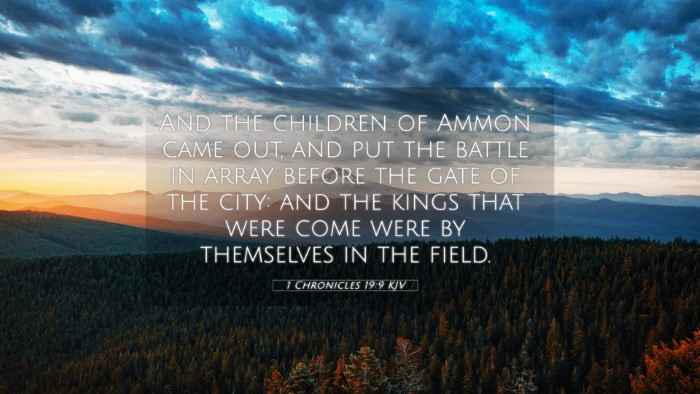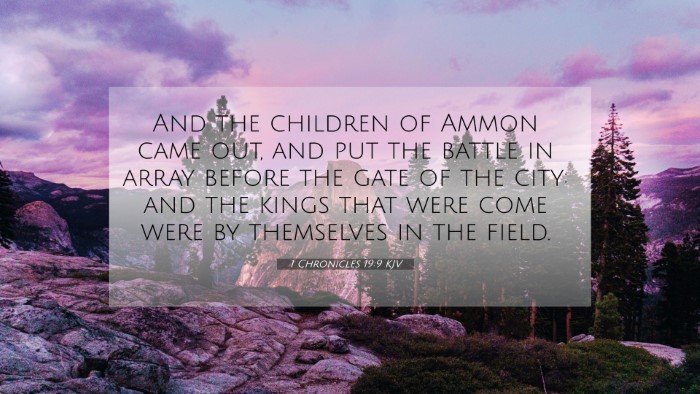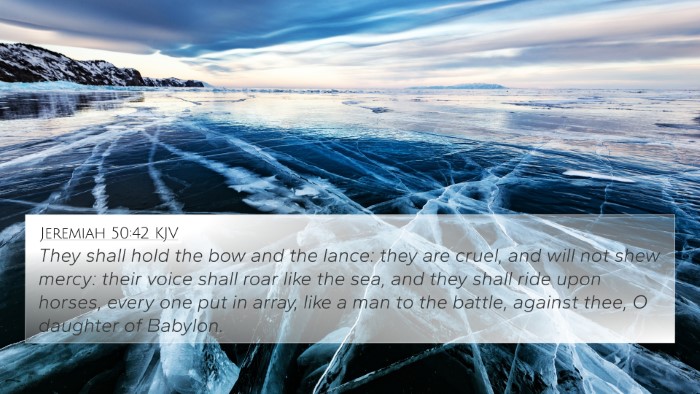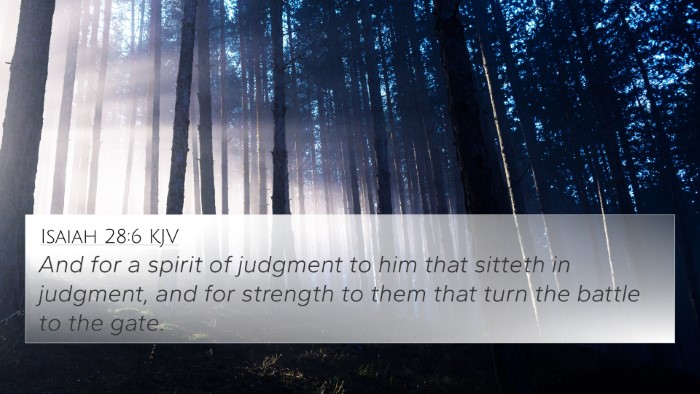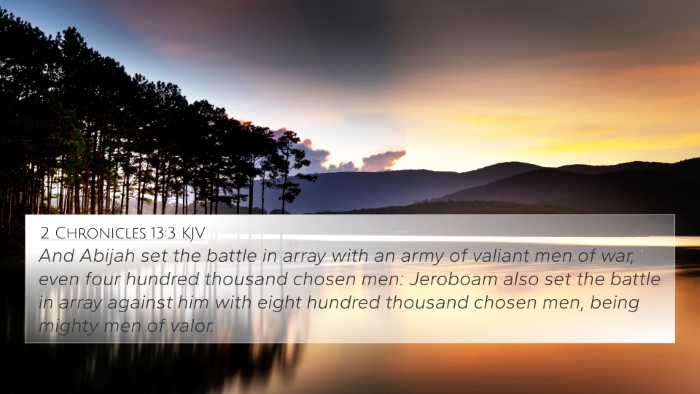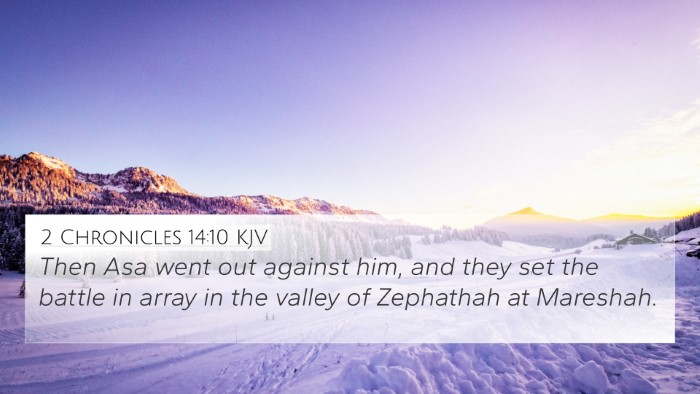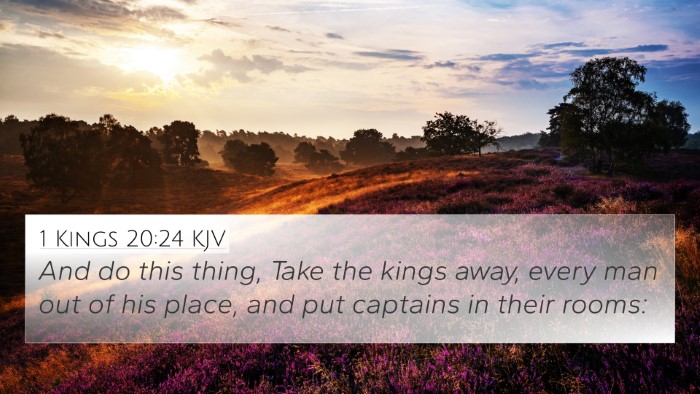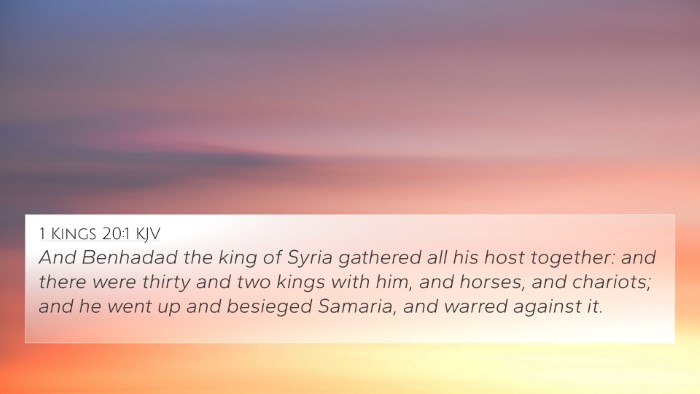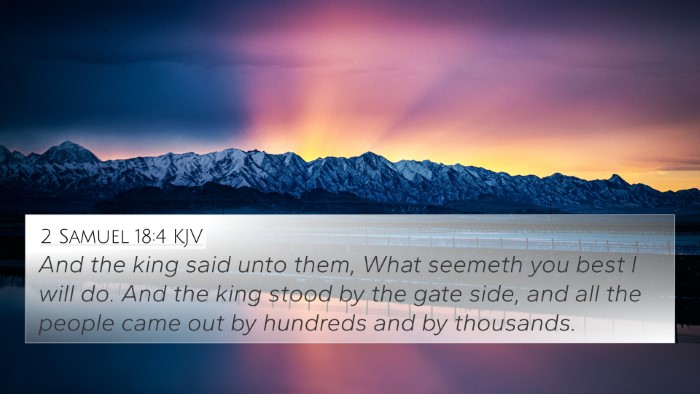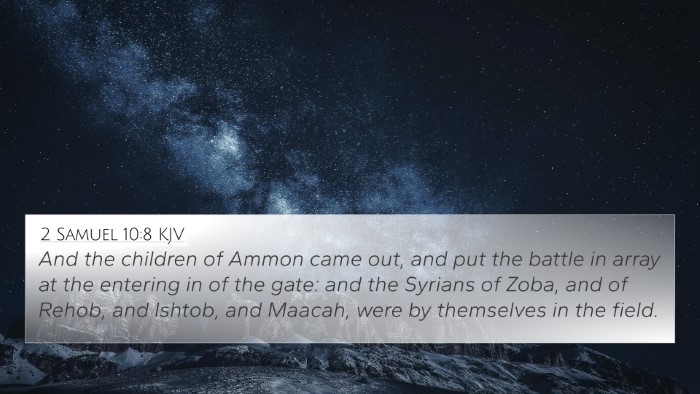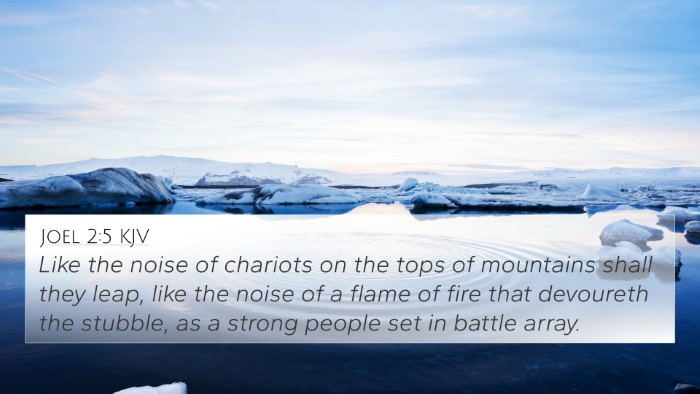Understanding 1 Chronicles 19:9
1 Chronicles 19:9 describes an important diplomatic and military maneuver during the reign of King David, highlighting deep-seated tensions and the complexities of interaction between nations. This verse indicates the presence of military leaders, specifically of the Ammonites, engaged in a battle against Israel's forces.
This verse can be understood through the lens of several public domain commentaries that provide insights into the historical context and theological significance surrounding it. The following is a synthesis of these interpretations.
Context and Historical Background
According to Matthew Henry, the context of this chapter is pivotal for understanding Israel's relationship with neighboring countries. The Ammonites, feeling threatened and emboldened by their new king, Nahash, sought alliances against David. Henry emphasizes that this illustrates the perpetual conflicts faced by Israel and the challenges David encountered as a unifier and warrior king.
Adam Clarke aligns with this view and notes that the military anticipation expressed in this verse symbolizes more than just a physical confrontation. It implies a deeper spiritual warfare that was often enacted through the historical accounts of Israel. Clarke warns that such conflicts often reflected the inner state of the nation regarding their obedience to God.
Key Themes
- Political Intrigue: David is depicted in a position of vulnerability where diplomatic negotiations could lead to warfare.
- Military Strategy: The presence of military leaders and their preparations for battle signify the gravity of the situation surrounding David's kingdom.
- Divine Protection: Underlying this verse is the assurance of God's guidance during times of strife, a recurring theme throughout David’s narrative.
Biblical Cross References
This verse connects with several other scriptures that reflect similar themes of conflict, leadership, and divine intervention:
- 2 Samuel 10:6-7: This passage discusses the Ammonites hiring mercenaries, echoing the strategic military alliances discussed in 1 Chronicles 19:9.
- Psalm 20:7: "Some trust in chariots, and some in horses; but we will remember the name of the Lord our God," which reflects David's reliance on God's strength in battles.
- 1 Samuel 8:20: The Israelites' desire for a king to lead them into battle is fulfilled in David’s reign and the subsequent conflicts.
- 2 Samuel 11:1: Illustrates the pattern of kings going to war, further tying David's personal narrative into the political realm of warfare.
- Jeremiah 49:1: Discusses the Ammonites in the context of not only their wars but their future judgment, enhancing the backstory presented in Chronicles.
- Proverbs 21:31: "The horse is prepared against the day of battle: but safety is of the Lord," highlighting the contrast between human effort and divine intervention.
- Romans 15:4: "For whatsoever was written in former days was written for our instruction," which speaks to the value of Old Testament narratives in understanding God’s continual involvement in human affairs.
Thematic Bible Verse Connections
The conflicts depicted in 1 Chronicles 19:9 are indicative of larger themes in the Bible regarding leadership, faith, and conflict resolution. The intricate web of relationships depicted within scripture often mirrors our personal conflicts today.
- Leadership: Leaders, as seen through David’s lens, are often called to navigate treacherous waters of diplomacy while maintaining fidelity to God.
- Faith in Adversity: The need for reliance on God during conflict is a common thread found throughout Biblical accounts.
- Divine Sovereignty: God's hand is seen guiding the outcomes of these battles, portraying that He is always present during human struggles.
Conclusion
Ultimately, 1 Chronicles 19:9 serves as a reminder of the realities of war, both physical and spiritual. The insights garnered from public commentaries illustrate how this verse reflects ongoing themes of faith, sovereignty, and divine intervention throughout the entirety of Scriptural accounts. Readers can benefit from understanding the connections between these verses and employing tools for cross-referencing to further delve into God's messages within the Bible.
Tools for Bible Cross-Referencing
For those interested in a deeper exploration of cross-references in the Bible regarding themes such as warfare and leadership, the following tools might be helpful:
- Bible concordance to quickly locate relevant scriptures.
- Bible cross-reference guide that highlights connections between verses.
- Using a cross-reference Bible study to understand interconnections.
- Utilizing Bible reference resources for mapping major themes.
In conclusion, the study of 1 Chronicles 19:9, in light of other Biblical narratives, can provide profound insights into the nature of leadership, conflict, and faith. Through comparative Bible verse analysis, one can appreciate the depth and continuity of God's message throughout scripture.

